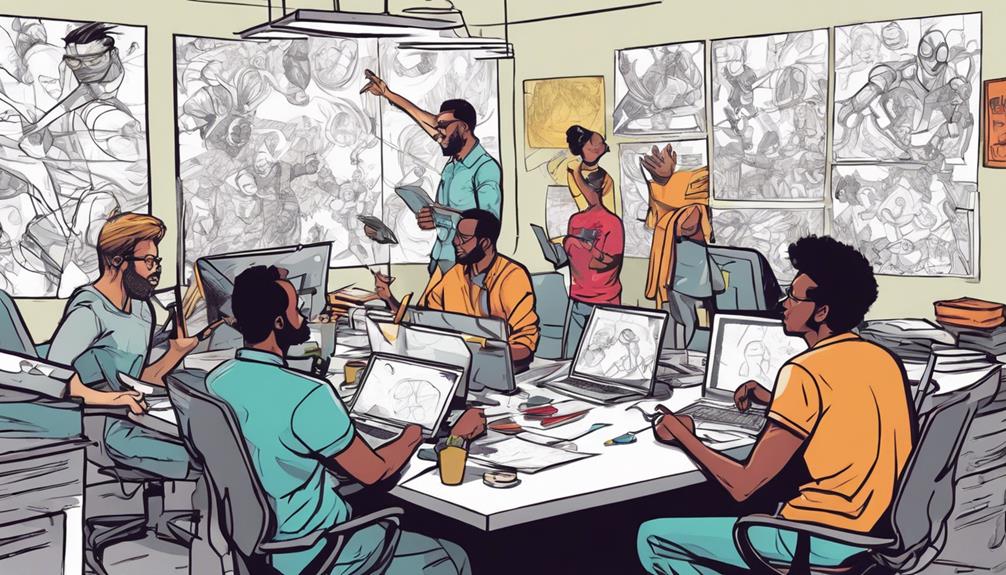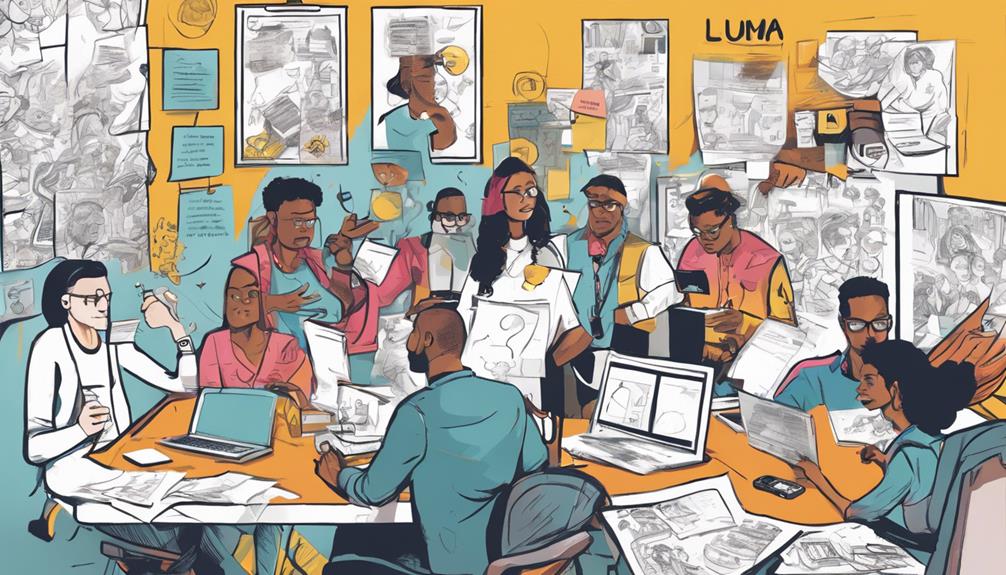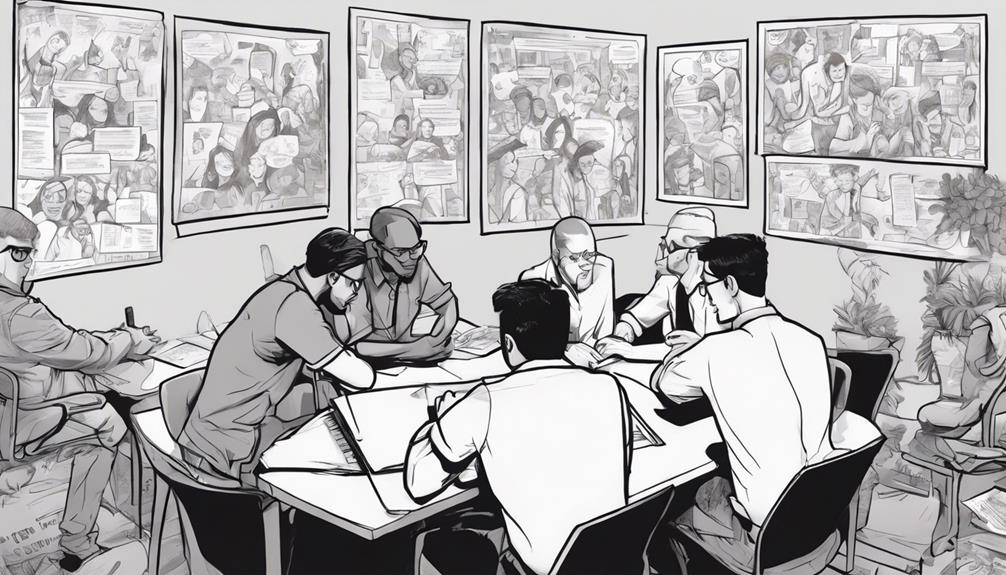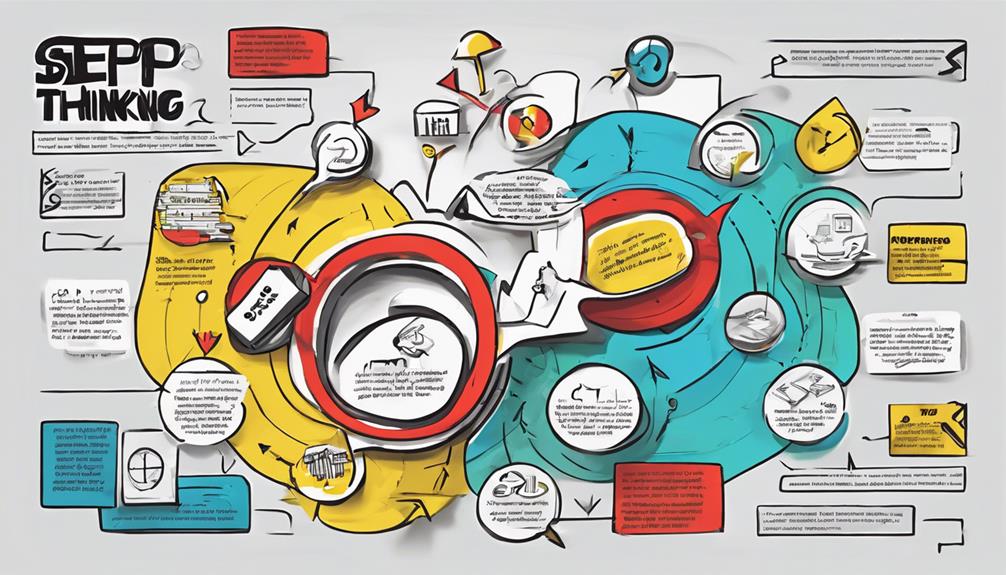Access success with design thinking! Begin by prioritizing empathy to cultivate collaboration and innovation. Embrace uncertainty for unconventional creativity. Fine-tune your ideas through prototyping and testing for groundbreaking solutions. Acquire industry insights for maneuvering challenges and optimizing tools effectively. Experience the transformative influence of design thinking on students' development and real-world projects. Every component plays a pivotal role in your blueprint for success, leading you towards innovative solutions and significant outcomes.
Key Takeaways
- Prioritize empathy to foster collaboration and innovation.
- Embrace ambiguity for out-of-the-box thinking and creativity.
- Prototype and test ideas for iterative refinement and innovation.
- Gain industry insights for successful Salesforce implementations.
- Develop critical skills through project-based learning for real-world impact.
Empathy in Leadership
Empathy plays a pivotal role in effective leadership, guiding teams through emotional responses in design thinking projects. When leaders prioritize empathy, they create a supportive environment that fosters a culture of collaboration and creativity.
Through understanding team members' perspectives and emotions, leaders can navigate challenges more effectively, leading to innovative solutions. Anne Linds approach serves as a prime example of how empathy in leadership can drive successful project outcomes in design thinking.
By empathizing with team members, leaders can inspire trust, encourage open communication, and promote a sense of belonging within the team. This sense of connection not only enhances team dynamics but also paves the way for groundbreaking ideas and creative breakthroughs.
Essentially, embracing empathy in leadership isn't just about understanding emotions; it's about leveraging those insights to propel the team towards achieving shared goals and driving impactful results in design thinking projects.
Embracing Ambiguity

Moving through uncertainty and complexity is a fundamental aspect of embracing ambiguity in design thinking methodology. In the domain of design, embracing ambiguity isn't about confusion but rather about exploring various possibilities to foster innovation and creativity.
Design leaders, such as Larry Loftis at Boeing, have demonstrated how embracing ambiguity can lead to successful brainstorming sessions and ultimately drive unique solutions.
When you embrace ambiguity in the design thinking process, you open yourself up to a world of creative breakthroughs. By allowing yourself to navigate through ambiguity, you create space for out-of-the-box thinking and experimentation. It's about striking a balance between exploring multiple options and maintaining a sense of direction to guide your design journey.
Embracing ambiguity isn't a sign of weakness but a strategic approach to problem-solving in design. It encourages you to push boundaries, challenge assumptions, and think differently to achieve successful outcomes.
Essentially, embracing ambiguity in design thinking is a powerful tool that can fuel your creativity and lead you towards innovative solutions.
Rehearsing Future Possibilities

To enhance your design thinking process, consider incorporating prototyping and testing to explore future possibilities effectively. By embracing an iterative approach, you can continuously refine your ideas and uncover innovative solutions.
Learning from failures is a valuable aspect of this process, allowing you to adapt and improve your designs. Encouraging creativity and innovation through exploring various possibilities will lead to breakthrough ideas.
In this phase, feedback is private, allowing you the freedom to experiment without external pressure. This fosters a safe environment for testing and refining your concepts.
By rehearsing future possibilities through prototyping and testing, you can showcase better contributions to your projects. Take inspiration from successful examples like Seth Schoenfeld's innovative educational approaches at Olympus Academy.
Embrace the iterative nature of design thinking to drive creativity, innovation, and success in your projects.
Industry Insights
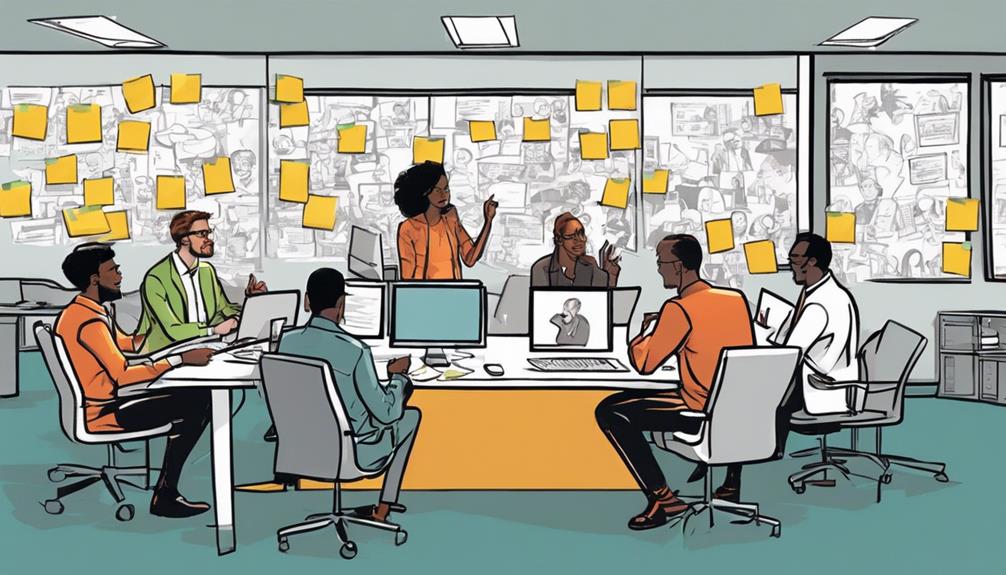
Explore valuable industry insights from Kander's blog, offering a wealth of knowledge on Salesforce, CRM best practices, CPQ solutions, AI strategies, and inclusive workforce strategies for veterans.
Dive into the world of Salesforce consulting and implementation through Kander's detailed industry insights that address a myriad of topics essential for businesses aiming to optimize their Salesforce capabilities.
Here are some key highlights:
- Real-world case studies provide practical examples of successful Salesforce implementations.
- Best practices are shared to guide businesses in effectively utilizing Salesforce tools and features.
- Strategies for success within the Salesforce ecosystem are outlined to help businesses navigate challenges.
- The blog covers a wide range of topics relevant to Salesforce, ensuring businesses are well-informed.
- Inclusive workforce strategies for veterans emphasize the importance of diversity and inclusion in the workplace.
Kander's industry insights serve as a valuable resource for businesses looking to address pain points and make informed decisions in the dynamic Salesforce landscape.
Impact on Students

Students in the program experience significant growth and development in critical thinking and communication skills through project-based learning. The Blueprint curriculum not only fosters curiosity and passion but also encourages self-directed learning. By learning to collaborate, innovate, and problem-solve effectively, students are better equipped to make a real impact through their projects. Design Thinking at Blueprint goes beyond traditional education methods, helping students understand themselves and the world through empathy, ideation, and prototyping.
| Skills Developed | Benefits | Opportunities |
|---|---|---|
| Critical Thinking | Enhanced problem-solving abilities | Real-world project impact |
| Communication | Improved ability to convey ideas | Collaboration with peers |
| Self-Direction | Increased motivation for learning | Innovation in project work |
Frequently Asked Questions
What Is Blueprint in Design Thinking?
In design thinking, a blueprint is a project-based learning approach where you set student-driven goals for real-world problem-solving. It encourages unique project goals based on interests and leverages curiosity and passion for research.
What Is Your Blueprint for Success?
When defining your blueprint for success, start by setting clear goals, understanding customer needs, and fostering a culture of innovation. Embrace creativity, prioritize user feedback, and test ideas rigorously to achieve sustainable growth and competitive advantage.
What Are the 3 P's of Design Thinking?
The 3 P's of design thinking are People, Process, and Product. They emphasize a human-centric approach, iterative problem-solving, and innovative solutions. Prioritizing user empathy, creative problem-solving, and iterative testing leads to successful outcomes.
What Are the 5 Points of Design Thinking?
When exploring the 5 points of design thinking, remember user-centricity, creativity, rapid testing, business value, and efficiency. These pillars guide innovation, problem-solving, and product development, ensuring customer satisfaction and market success.
Conclusion
To wrap up, design thinking strategy is your gateway to success in today's constantly evolving world. Just like a compass guides a ship through turbulent seas, this blueprint will steer you through the intricacies of innovation and problem-solving.
So, fasten your seatbelt and get ready to venture on a path brimming with creativity, empathy, and boundless possibilities. Your success story awaits, so immerse yourself and design your future!
